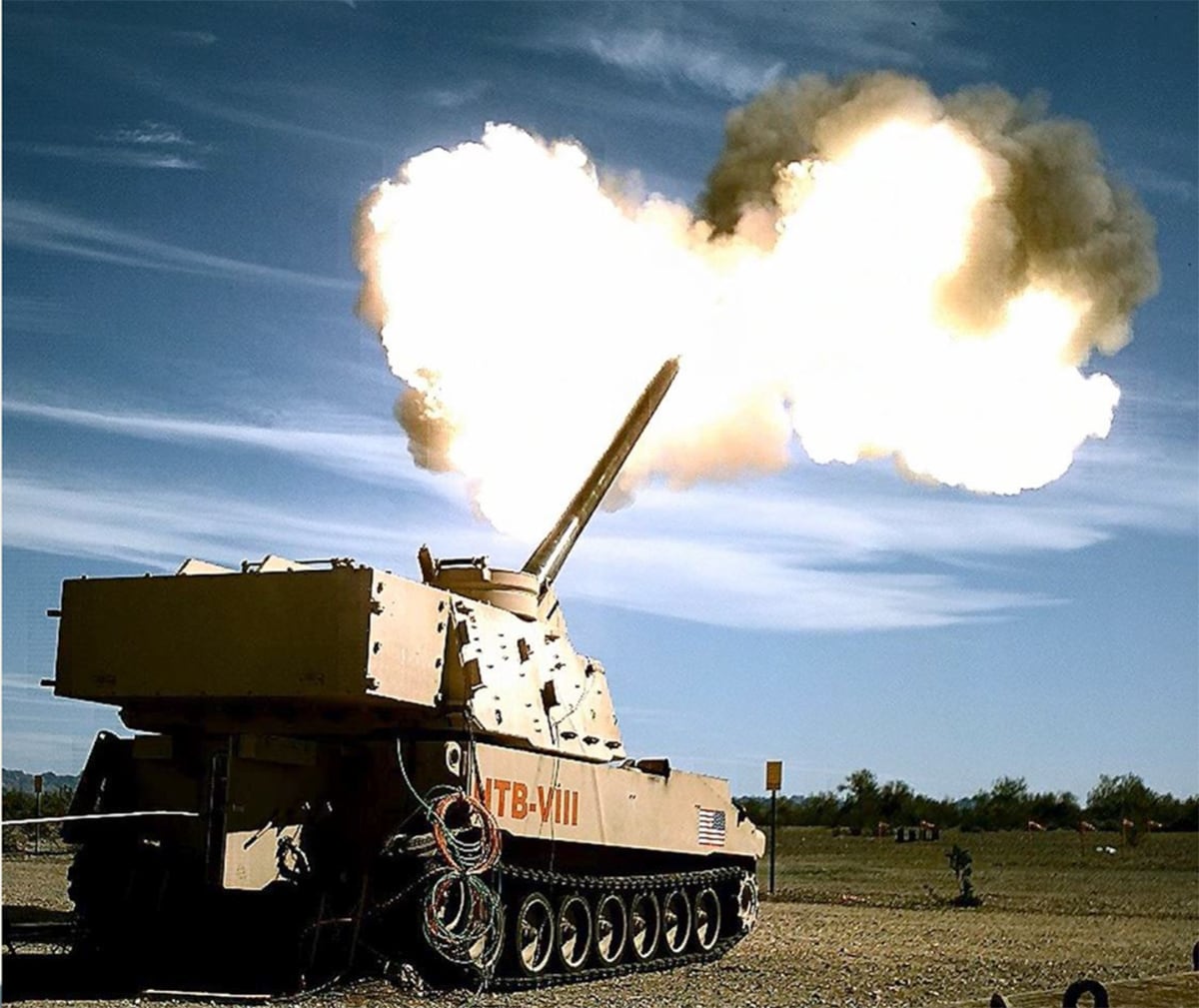WASHINGTON — The U.S. Army is counting on a major operational test of its Extended Range Cannon Artillery system to help it answer several questions, such as how well the longer gun tube can handle a heavy amount of firing, according to the program’s leader and the service’s acquisition chief.
Many factors are at play with the development of a longer-range cannon that uses a 58-caliber gun tube mounted on the chassis of a Paladin Integrated Management howitzer. Observations in early testing of prototypes are showing excessive wear on the gun tube after firing a relatively low number of rounds.
“New ammunition is as much of the challenge with the program as it is the weapon system,” Doug Bush, the Army’s acquisition chief, told Defense News in an interview ahead of the Association of the U.S. Army’s annual conference.
“So we’ll know a lot more when we actually get through our testing and then get into the operational evaluations in terms of how long [of a] time between maintenance [is] required — reliability, basically,” he added.
Improving the rate of fire before the gun tube requires replacement could be achieved by adjustments in materials used and the design of the gun tube, adjustments to propellants, and the design of artillery rounds fired from the cannon, according to Col. Rory Crooks, the head of the Army’s Long Range Precision Fires Cross-Functional Team
The Army is currently building 20 prototypes of the ERCA system: two for destructive testing and the remaining 18 for a battalion set to receive the weapons by the fourth quarter of fiscal 2023. That unit will then run the cannons through a yearlong operational test.

The Army is on track to deliver those systems, Crooks told Defense News in a recent interview. That means the service will have built 20 prototypes in less than three years.
The Army has been putting together the ERCA systems across several different locations, including New York’s Watervliet Arsenal, which makes the gun tubes. Their final integration will occur at Picatinny Arsenal in New Jersey, after which they’ll head to Yuma Proving Grounds in Arizona for characterization testing.
The Army is continuously working to improve the quality of the gun tube during manufacturing at Watervliet so they can “hold up under conditions we want. That is not something you do on Day One; that is an ongoing process,” Bush said.
Seeing how the gun tube interacts with the new propellants and new rounds, as well as how they perform under operational conditions, will prove informative, he added. “I think, for now, we believe there are technology adjustments and technique adjustments we can make to address [the issues], but it’s too early to say for sure. So it’s definitely a watch item.”
“The physics that are associated with the 58-caliber [gun tube] are different than the physics that are associated with a 39-caliber,” Crooks said, “and so the more iterations we get out of the tests on this 58-caliber tube at the supercharge ranges that we’re employing, the more we address each of the things that come up.
“But we’ve certainly made accommodations with a different breech, and it was regarding tube wear. This is something that, as we get more information, as we apply different approaches thanks to [science and technology] work, we’re going to continue to get after it.”
One possible solution could be using ramjet artillery currently in development. The Army is exploring a 155mm ramjet capability, but in order for the service to invest more time, Crooks noted, the technology must “meet certain criteria, which is the cost. Costs have to be something that should not be on par with what rockets cost,” Crooks said. “And they need to be lethal.”
Leading up to the operational test, the Army will continue science and technology work to help solve physics issues while continuing to “test, fix, test” as it receives more prototypes.
According to Bush, the Army will hold a competition for the ERCA system “at the appropriate time.” The Army isn’t planning to hold a competition for a company to build an entire vehicle from scratch.
“What’s being competed is taking a [Paladin Integrated Management] chassis, a modified cab and putting the new gun into it,” Bush said.
Jen Judson is an award-winning journalist covering land warfare for Defense News. She has also worked for Politico and Inside Defense. She holds a Master of Science degree in journalism from Boston University and a Bachelor of Arts degree from Kenyon College.




